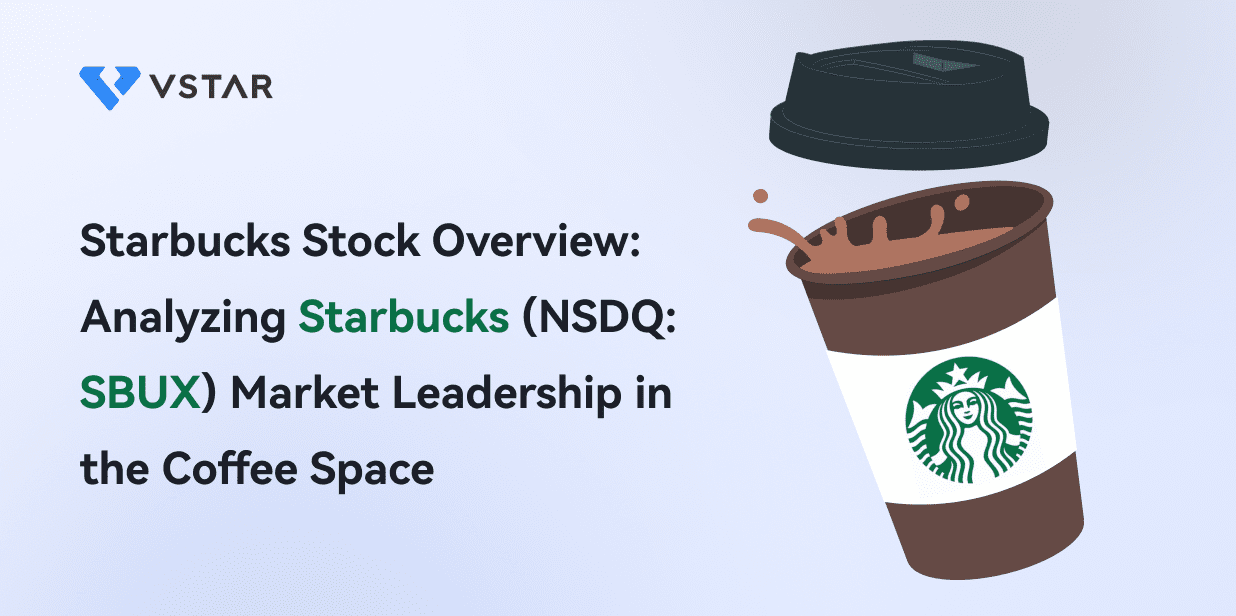Starbucks (NASDAQ: SBUX) is the world's leading coffee brand, with over 33,000 stores in over 80 markets. The company is known for its high-quality coffee, innovative beverages, and customer loyalty. Starbucks has been ranked as one of the most admired companies in the world by Fortune magazine for more than two decades. But how did Starbucks achieve such a dominant position in the coffee space? And what are the challenges and opportunities that lie ahead for the company?
Starbucks Founded
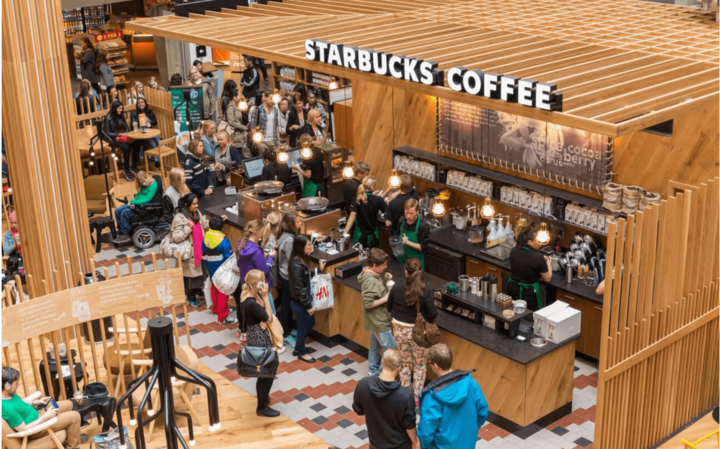
Source: Alamy
What is Starbucks
Starbucks Corporation is the world's leading coffee brand, founded in 1971 in Seattle by Jerry Baldwin, Zev Siegl, and Gordon Bowker. The company operates through three main segments: Americas, International, and Channel Development, and has over 33,000 stores in more than 80 markets. The current CEO of Starbucks is Laxman Narasimhan, who succeeded Howard Schultz in September 2022. The top five shareholders of Starbucks are Vanguard Group Inc., BlackRock Inc., State Street Corp., Magellan Asset Management Ltd., and Howard Schultz.
The company has achieved many milestones in its history, such as going public in 1992, opening its first international store in 1996, launching its loyalty program in 2001, acquiring Tazo Tea Company and Teavana, opening its first Reserve Roastery in 2013, and announcing its commitment to become a resource-positive company in 2020.
Starbucks Corp's Business Model and Products/Services

Source: Alamy
Starbucks' business model focuses on creating a premium customer experience and offering a variety of coffee and other products through different channels. The company operates and licenses stores located in strategic and high-traffic areas. Starbucks also sells its products through convenience stores, grocery stores, specialty stores, warehouse clubs, and its website. Starbucks adds value to its service and product by improving its quality, layout, app, loyalty program, and personalization. Starbucks makes money by charging customers for its products and earning revenue from merchandise and licensed products.
Starbucks offers a range of products and services, such as coffee, tea, food, and other beverages. The company sources coffee beans from various regions worldwide and roasts them in its facilities. Additionally, the company sells packaged coffee and single-serve pods under different brand names. The company offers a variety of tea products, such as hot tea, iced tea, chai tea latte, matcha green tea latte, and herbal infusions. The company also sells packaged tea and tea accessories under different brand names.
Starbucks offers a variety of food items, such as pastries, sandwiches, salads, wraps, snacks, and breakfast items. It also sells packaged food products under different brand names. The company offers a variety of other beverages, such as hot chocolate, frappuccino, smoothies, juices, milk alternatives, and bottled water. Also, the company sells ready-to-drink products under different brand names.
SBUX Earnings, Growth, and Valuation Metrics

Source: Alamy
Starbucks' financial performance reflects its market leadership and coffee-space resilience. The company has consistently delivered strong revenue growth, profitability, and cash flow generation. In this section, we will review Starbucks' financial statements, key financial ratios, and metrics and compare its valuation multiples to its peers and the industry.
Review of Starbucks Corp's Financial Statements
Starbucks Market Cap
Starbucks Earnings
The company's net income for the second quarter of fiscal 2023 was $908 million, an increase of 36% from $652 million in the same period of fiscal 2022. The increase was mainly due to higher revenues, lower costs, and lower income tax expenses.
Starbucks Revenue
The company's revenue for the second quarter of fiscal 2023 was $8.7 billion, an increase of 14% from $6.7 billion in the same period of fiscal 2022. The increase got driven by an 11% growth in comparable store sales, partially offset by a 2% unfavorable impact from foreign currency translation.
The company's operating margin for the second quarter of fiscal 2023 was 15.2%, an increase of 280 basis points from 12.4% in the same period of fiscal 2022. The increase was mainly due to sales leverage, pricing, productivity improvements, and the gain on the sale of the Seattle's Best Coffee brand. This expansion was partially offset by previously committed investments in labor, including enhanced store partner wages and benefits, and increased general and administrative costs related to our Reinvention Plan as well as inflationary pressures. The company's net margin for the second quarter of fiscal 2023 was 10.42%, an increase of 133 basis points from 9.09% in the same period of fiscal 2022. The increase was mainly due to higher operating income and lower income tax expenses.
The company's return on equity for the second quarter of fiscal 2023 was -106.5%, a decrease of 168.1 percentage points from 61.6% in the same period of fiscal 2022. The decrease was mainly due to lower average shareholders' equity, which was negative due to accumulated losses and share repurchases.
Starbucks Balance Sheet
The company's balance sheet, as of March 28, 2023, showed that the company had total assets of $28.6 billion, total liabilities of $37.1 billion, and total shareholders' equity of -$8.5 billion. The company had a current ratio of 0.77, indicating sufficient liquidity to meet its short-term obligations. The company had a debt-to-equity ratio of -2.9, indicating a high level of leverage and financial risk. The company had a free cash flow of $1 billion for the second quarter of fiscal 2023, an increase of 18% from $849 million in the same period of fiscal 2022. The company used its free cash flow to pay dividends, repurchase shares, invest in capital expenditures, and reduce debt.
Key Financial Ratios and Metrics
Starbucks has a higher price-to-earnings (P/E) ratio than McDonald's and the industry average, indicating that it is more expensive relative to its earnings. However, Starbucks also has a higher revenue growth rate than McDonald's and the industry average, indicating stronger growth prospects.
Starbucks has a lower price-to-sales (P/S) ratio than McDonald's and the industry average, indicating that it is cheaper relative to its sales. However, Starbucks also has a lower profit margin than McDonald's and the industry average, indicating lower profitability.
Starbucks has a negative price-to-book (P/B) ratio, indicating a negative book value or more liabilities than assets. This is mainly due to the company's high level of goodwill and intangible assets, which are not reflected in the book value. However, Starbucks also has a high return on equity, indicating that it generates high returns for its shareholders.
Starbucks has a higher enterprise value-to-EBITDA (EV/EBITDA) ratio than McDonald's and the industry average, indicating that it is more expensive than its earnings before interest, taxes, depreciation, and amortization. However, Starbucks has a higher EBITDA growth rate than McDonald's and the industry average, indicating more substantial growth potential.
Starbucks Value
Overall, we can conclude that Starbucks is neither undervalued nor overvalued but fairly valued based on its valuation multiples. The company has a premium valuation due to its market leadership, brand equity, innovation, and customer loyalty. However, the company also faces competitive risks, rising costs, and regulatory challenges that may affect its future performance. Therefore, investors should consider both the opportunities and threats of Starbucks before making a decision.
SBUX Stock Performance Analysis
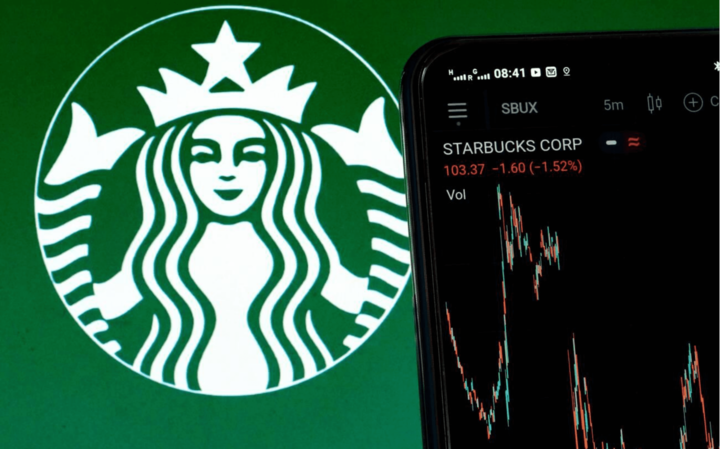
Source: Alamy
Starbucks Corp went public on June 26, 1992, at an initial public offering price of $17 per share, adjusted for stock splits. The company trades on the Nasdaq Global Select Market under the ticker symbol SBUX. The stock is denominated in US dollars (USD) and is based in the United States. The regular trading hours for SBUX stock are from 9:30 a.m. to 4:00 p.m. Eastern Time, Monday to Friday, excluding US market holidays. The pre-market and after-market trading hours are from 4:00 a.m. to 9:30 a.m. and from 4:00 p.m. to 8:00 p.m., respectively, on the same days.
Starbucks Stock Splits
Starbucks Corp has split its stock six times since its IPO, all 2-for-1 splits. The most recent stock split occurred on April 8, 2015.
Starbucks Dividend
The company also pays quarterly cash dividends to its shareholders. The most recent SBUX dividend was $0.53 per share, with an ex-dividend date of August 10, 2023, and a payment date of August 24, 2023.
SBUX Stock Price Performance since its IPO
SBUX stock has been on an upward trend since its IPO, reaching its all-time high of $115.48 on July 13, 2023, and its all-time low of $0.28 on June 26, 1992 (adjusted for stock splits). As of July 29, 2023, Starbucks Stock closed at $101.24 per share, up 0.47% from the previous day. SBUX stock has a beta of 0.93, which means that it is slightly less volatile than the market as a whole. Starbucks Stock has recovered from the COVID-19 pandemic, which caused it to hit a low of $50.02 in March 2020.
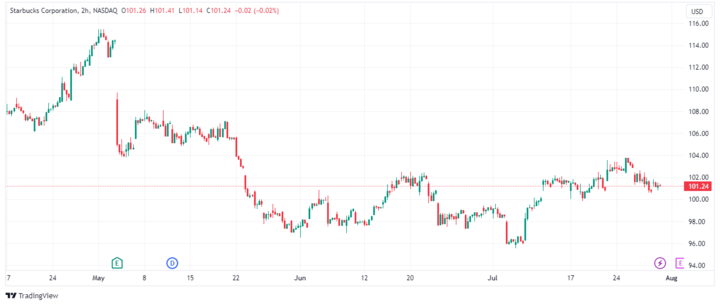
Source: TradingView
Starbucks Stock Forecast
Based on the technical analysis of the Starbucks stock price chart below, the key resistance levels for Starbucks stock are $102.43, $108.61, and $115.48, while the key support levels for Starbucks share price are $96.68, $90.50, and $83.55. Resistance levels are the prices that tend to prevent the stock from rising further, while support levels are the prices that prevent the stock from falling further.
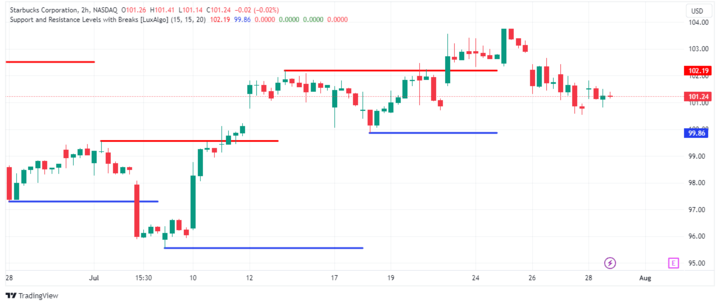
Source: TradingView
The consensus among 33 analysts covering Starbucks stock is a buy rating, with 20 analysts giving a strong buy or buy rating, 11 analysts giving a hold rating, and two analysts giving an underperform or sell rating. The average price target from 29 analysts is $115.11, with a high estimate of $140 and a low estimate of $88. The median estimate represents a 14.23% increase from the last price of $100.78.
Challenges and Opportunities
Starbucks faces both challenges and opportunities in the competitive and dynamic coffee industry. In this section, we will identify and analyze the main factors that may affect Starbucks' performance and outlook.
Competitive Risks
Starbucks operates in a highly competitive market, facing both direct and indirect competition from various players. Some of the main competitors of Starbucks are:
- Dunkin' Donuts: Dunkin' Donuts is one of the largest coffee and baked goods chains in the world, with more than 11,500 locations in over 40 countries. Dunkin' Donuts competes with Starbucks by offering lower-priced coffee and beverages, as well as a variety of food items such as donuts, sandwiches, and wraps. Dunkin' Donuts also has a loyal customer base, especially in the Northeastern U.S., where it has a strong presence. Dunkin' Donuts has been expanding its digital capabilities, such as its mobile app, loyalty program, and delivery service, to enhance customer convenience and retention.
- McDonald's: McDonald's is the world's largest fast-food chain, with over 39,000 restaurants in over 100 countries. McDonald's competes with Starbucks by offering its McCafé line of coffee and espresso drinks, as well as smoothies, frappes, and bakery items. McDonald's has a competitive advantage in its global scale, brand recognition, and low-cost strategy. McDonald's also leverages its extensive drive-thru network, which accounts for about 70% of its U.S. sales, to attract customers who value speed and convenience.
- Luckin Coffee: Luckin Coffee is a Chinese coffee chain that was founded in 2017 and has grown rapidly to over 6,500 stores in China. Luckin Coffee competes with Starbucks by offering lower-priced coffee and tea products, as well as snacks and light meals. Luckin Coffee also relies heavily on its mobile app, which allows customers to order online and pick up their drinks at nearby locations or have them delivered. Luckin Coffee aims to provide a high-quality and convenient coffee experience for Chinese consumers, especially young urban professionals.

Source: Unsplash
These competitors threaten Starbucks' market share, profitability, and growth potential. However, Starbucks has several competitive advantages over its competitors in several aspects:
- Quality: Starbucks sources, roasts, and brews high-quality coffee beans from ethical and sustainable farms. Starbucks offers a wide range of coffee varieties and flavors, as well as customized options for customers.
- Service: Starbucks provides exceptional service to its customers, who get greeted by friendly and knowledgeable baristas. Starbucks also creates a welcoming and comfortable atmosphere in its stores, where customers can relax, work, or socialize. Starbucks also rewards its loyal customers with its Starbucks Rewards program, which offers free drinks, food items, personalized offers, birthday rewards, and payment convenience.
- Value: Starbucks delivers value to its customers by offering not only coffee products but also other beverages and food items. Also, Starbucks offers other services such as, free Wi-Fi, music streaming, and digital content. Starbucks also supports various social and environmental causes, including community development, youth education, diversity and inclusion, and climate action.
Other Risks
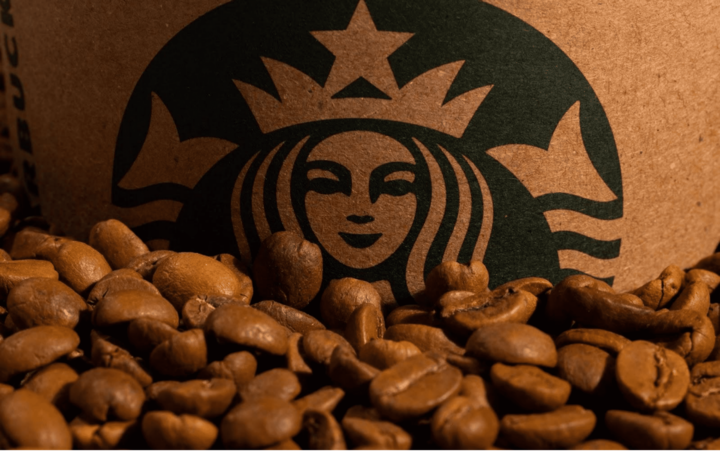
Source: Unsplash
Starbucks also faces challenges such as rising costs, regulations, and the pandemic. Starbucks may face higher costs for raw materials, such as coffee beans, dairy products, sugar, and paper cups, due to various factors. Higher costs may lower Starbucks' profit margins or force it to raise its prices, thereby reducing its customer demand and loyalty. Starbucks may also face various laws and regulations in the operating countries, such as health and safety standards, labor practices, environmental protection, taxation, data privacy, intellectual property rights, and antitrust laws. Compliance with these regulations may entail significant costs and liabilities for Starbucks. Moreover, Starbucks may face regulatory changes or uncertainties that may harm its business operations or expansion plans.
The COVID-19 pandemic has also severely impacted Starbucks' business in 2020 and 2021. The pandemic has caused store closures or reduced capacity, disrupted supply chains, decreased customer traffic, increased health and safety expenses, and impaired goodwill and other assets. Although Starbucks has taken measures to mitigate the effects of the pandemic, the duration and severity of the pandemic remain uncertain. The pandemic may continue to pose significant risks to Starbucks' financial condition, results of operations, and growth prospects.
Growth Opportunities
Despite the challenges mentioned above, Starbucks also has many opportunities to grow its business and create value for its stakeholders. Some of the main opportunities for Starbucks are:
- Brand equity: Starbucks has a strong brand image and reputation in the coffee industry. The company is known for its high-quality products, exceptional service, and social responsibility. Starbucks can leverage its brand equity to attract and retain customers, enhance customer loyalty, and charge premium prices. Starbucks can also use its brand equity to expand into new markets, products, and channels, such as grocery stores, ready-to-drink beverages, and packaged coffee.
- Expansion: Starbucks has a large global footprint, with over 34000 stores in over 80 markets. However, the company still has room for further expansion, especially in emerging markets such as China, India, and Southeast Asia. These markets have large populations, growing economies, and increasing demand for coffee and tea products. Starbucks can capitalize on these opportunities by opening more stores, forming strategic partnerships, and tailoring its offerings to local tastes and preferences.
- Loyalty program: Starbucks has a successful loyalty program, called Starbucks Rewards, which has over 24 million active members in the U.S. and over 15 million active members in China as of the first quarter of fiscal 2023. The loyalty program allows customers to earn stars for every purchase, which can be redeemed for free drinks and food items. The loyalty program also offers personalized offers, birthday rewards, and payment convenience. The loyalty program helps Starbucks to increase customer frequency, spending, and satisfaction. Starbucks can further enhance its loyalty program by adding more benefits, features, and partners.
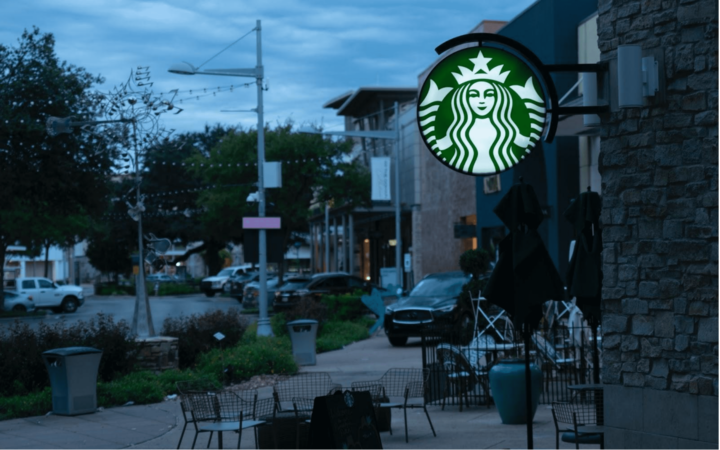
Source: Unsplash
Why Should Traders Consider SBUX Stock?
Traders should consider SBUX stock for the following reasons:
- Strong financial performance: SBUX has delivered impressive revenue and earnings growth, margin expansion and return on equity improvement in the second quarter of fiscal 2023. The company has also raised its financial guidance for the year, indicating its confidence in its prospects.
- Market leadership: SBUX is the world's largest coffee company, with a dominant position in the U.S. and a growing presence in China and other emerging markets. The company has a strong brand image, loyal customer base, and innovative product portfolio that differentiates it from its competitors.
- Growth opportunities: SBUX has many opportunities to grow its business and create value for its stakeholders, such as leveraging its brand equity, expanding into new markets, products, and channels, and enhancing its loyalty program.
- Attractive valuation: SBUX is fairly valued based on its sales but overvalued based on earnings and cash flow. This suggests that investors have high expectations for SBUX's future growth and profitability but also recognize its strong revenue performance and market leadership.
Trading Strategies for SBUX Stock
There are various trading strategies that traders can use to trade SBUX stock, depending on their risk appetite, time horizon, and market outlook. Some of the common trading strategies are:
- CFD Trading: CFD trading is a form of derivative trading that allows traders to speculate on the price movements of SBUX stock without owning the underlying asset. CFD trading has several advantages, such as lower costs, higher leverage, and access to global markets. However, CFD trading also involves higher risks, such as margin calls, overnight fees, and market volatility.
- Trend Trading: Trend trading is a strategy that involves following the direction of the dominant trend of SBUX stock, whether bullish or bearish. Trend traders use technical analysis tools, such as moving averages, trend lines, and chart patterns, to identify and confirm the trend and its strength. Trend traders aim to capture the majority of the trend and exit when the trend reverses or weakens.
- Swing Trading: Swing trading is a strategy that involves capturing short-term price fluctuations of Starbucks stock within a larger trend. Swing traders use technical analysis tools, such as support and resistance levels, indicators, and oscillators, to identify and exploit price swings and reversals. Swing traders aim to profit from both rising and falling markets and exit when the price reaches their target or stop-loss level.
Trade SBUX Stock CFD with VSTAR
VSTAR is a leading online trading platform that offers CFD trading on various financial instruments, including Starbucks stock. Trading SBUX stock CFD with VSTAR has many benefits and advantages, such as low spreads and commissions, which mean lower trading costs and higher profits for traders; flexible leverage and margin options, which allow traders to control a larger position with a smaller capital and amplify their returns, but also involve higher risks, so traders should use them wisely and responsibly; advanced trading tools and features, such as charting software, technical analysis indicators, trading signals, market news, and educational resources, which help traders to analyze the market, make informed decisions, and execute their trades efficiently and effectively; and secure and reliable platform, which uses the latest encryption technology and firewall systems to protect traders' personal and financial information, and complies with strict regulatory standards and ensures fair and transparent trading practices.
Conclusion
Starbucks is a global coffee company that has demonstrated its resilience and adaptability in the face of various challenges and opportunities in the competitive and dynamic coffee industry. The company has delivered strong financial performance, maintained its market leadership, and pursued growth opportunities while coping with competitive risks, rising costs, regulations, and the pandemic. These factors make Starbucks stock an exciting and attractive investment opportunity for traders who want to benefit from the company's prospects and potential. However, traders should be aware of the risks and uncertainties that may affect SBUX stock's price movements and volatility. Check out the VSTAR website today to trade SBUX stock.
FAQs
1. Is Starbucks stock overpriced?
Starbucks stock does not appear to be significantly overpriced based on current financial metrics. The P/E ratio is about 30, which is high but not unreasonable for a growth company.
2. How much does it cost to buy Starbucks stock?
To buy 1 share of SBUX stock today would cost about $104. Commissions and fees could add slightly to the purchase price.
3. Has Starbucks stock split?
SBUX stock has split its stock several times, most recently a 5-for-1 split in 2015, when the pre-split price was about $100 per share.
4. How often does SBUX pay dividends?
SBUX stock pays dividends quarterly. The current Starbucks stock dividend yield is around 2%.
5. What is the SBUX stock price forecast for 12 months?
The average 12-month price target for SBUX stock by analysts is $112, which implies an upside of approximately 8% from the current price.
